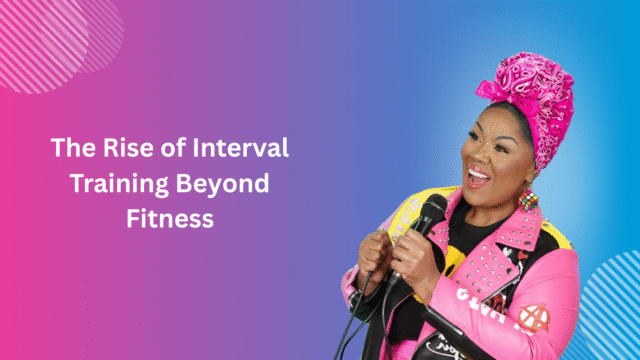Interval training once lived squarely in the gym. Athletes used it to increase stamina, shed fat, and build strength through short, intense bursts of activity followed by brief recovery periods. But recently, that same structure has been making its way into other areas of life, particularly education, performance training, and creative development.
What used to be reserved for sprinters and weightlifters is now helping singers, coders, public speakers, and musicians improve faster with less burnout. The core idea remains the same: intense focus, followed by a pause, then repetition. And it works because it matches how the brain and body actually learn best.
One method that exemplifies this crossover is what is vocal hiit. It applies the time-based intensity model to vocal training, allowing singers to strengthen their breath control, tone, range, and stamina in sessions that are both efficient and energizing. Rather than long, draining warmups, it jumps straight into performance with structure and intention.
Why the Interval Structure Works
At its core, interval training is built on three simple elements: intensity, rest, and repetition. This trio taps into two key human performance systems, the nervous system and attention span. By pushing effort in short bursts, then stepping back, the brain is able to stay alert longer and consolidate gains faster.
Long, continuous sessions often lead to mental drift. You begin strong, then lose clarity. Mistakes creep in. Repetition turns to autopilot. But intervals demand presence. They force you to reset each round and start fresh, sharpening attention.
One Common Question
Can interval training principles improve performance in areas outside of fitness?
Yes. When applied to skill-based learning like music or public speaking, interval formats improve focus, endurance, and skill retention.
Beyond the Gym: Cognitive Benefits
Cognitive scientists have found that the brain learns most effectively in cycles. You focus intensely, take a break, then return to the task with slightly more clarity. This mirrors the interval pattern perfectly.
In classrooms, techniques like Pomodoro timers, twenty-five minutes of work followed by five minutes of rest, have become widespread. In language apps, lessons are broken into digestible units. And in creative industries, short sprints are preferred over long marathons.
These tools all borrow from the same principle: your brain needs recovery to optimize growth. Without it, focus and quality decline, even if time spent increases.
The Application to Singing and Performance
In performance-based fields, interval training is especially powerful because it mirrors the conditions of real output. A singer, for instance, may only have a few minutes to prepare before performing. Or they may need to deliver one high-effort phrase after another with short pauses between.
Vocal HIIT models this reality. Singers move through exercises designed to mimic performance intensity. They learn to recover quickly, stay mentally alert, and execute under pressure. This builds not just skill, but resilience, a trait often missing in traditional long-form practice.
Why Efficiency Matters Now More Than Ever
In today’s world, time is scarce. Learners, creators, and professionals need methods that produce results without overwhelming schedules. Interval-based training offers a way to do more with less.
You might not have two hours for practice. But you likely have twenty minutes. And when those twenty minutes are structured into intervals, they often produce more progress than a longer, unfocused session.
This model also reduces emotional fatigue. Because each segment is brief, it feels achievable. You are more likely to start and more likely to finish. Over time, this builds consistency, the true engine of mastery.
Building Your Own Interval Practice
To apply interval principles outside of fitness, start by designing your routine around effort and recovery. For example:
- Set a timer for 3 minutes of high-focus work
- Rest for 1 minute
- Repeat the cycle 4 to 5 times
- Choose one specific target per interval (e.g., pitch stability, phrasing, breath control)
- Adjust intensity to avoid strain while still pushing capacity
This framework can be applied to anything: writing, rehearsing, designing, even problem-solving. The key is presence during the work phase and full disengagement during the rest phase.
The Future of Learning Is Rhythmic
As more people seek better ways to learn, perform, and grow, rhythm-based structures like interval training are leading the way. They honor the body’s limits while challenging its potential. They ask for focus, not perfection. And they return more than they take.
Whether you are in the studio, on stage, or at your desk, this method helps. It respects time. It rewards consistency. And it helps you improve without exhaustion.
Final Thought
Interval training has moved beyond the gym because it works wherever growth requires effort and recovery. It teaches you how to manage your energy, protect your attention, and build strength in cycles. That rhythm, challenge, pause, repeat, is not just good for your body. It is essential for your mind.





